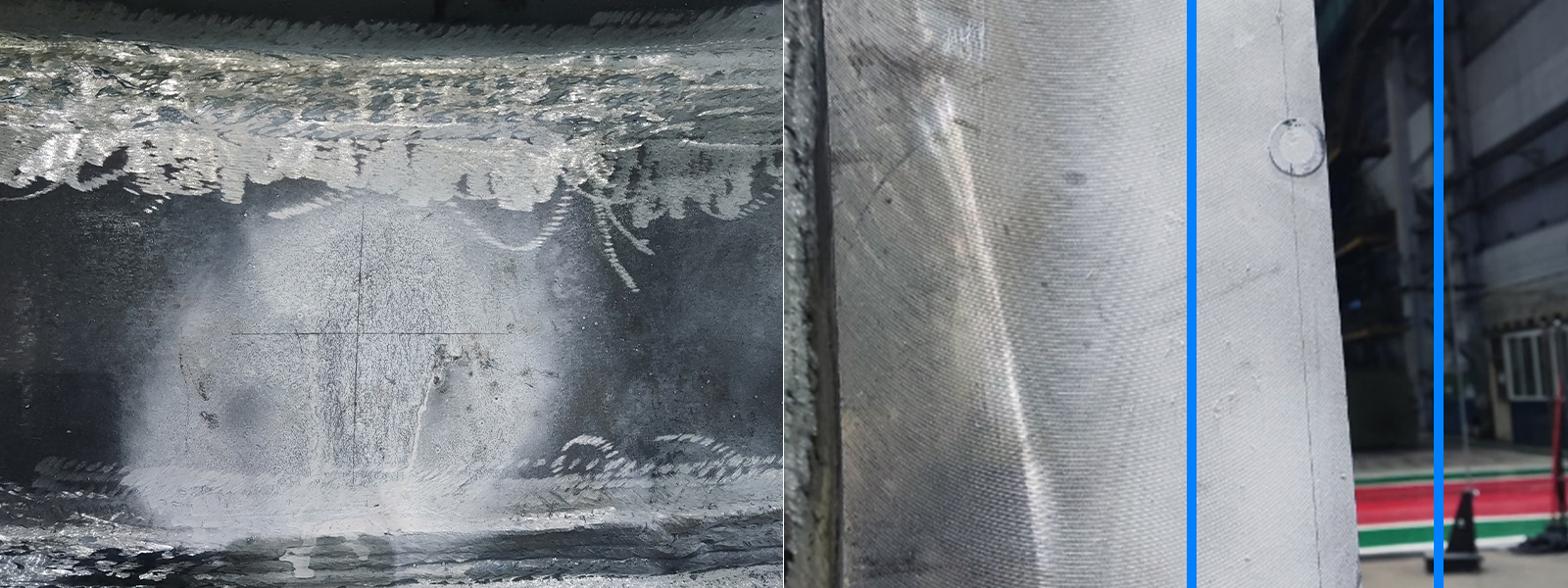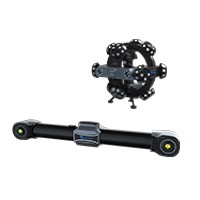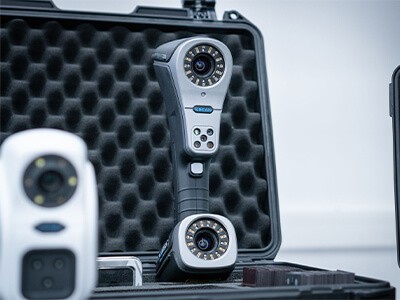Features of Scantech’s 3D solution
Scantech’s optical measuring system TrackScan-P consists of a 3D laser measurement scanner, engineered with innovative blue-and-red laser scanning, and an optical and sticker-free tracker.
The system measures the actual geometry of the blank, which ensures sufficient machining allowance in production and replaces traditional marking. It provides the data basis for adaptive machining by optimizing the machining path based on the data captured.
Ergonomic Design of 3D scanner
• The portable 3D scanner can scan the part from any direction you want, which is easy to operate.
• The 3D scanner is built onto a spherical frame, which offers an even stress distribution. The markers placed over this soccer-like frame enable E-Track to position the 3D scanner in all directions.
• It’s made of aerospace fiber so it is lightweight. Due to its ergonomic design, the 3D scanner allows users to scan for a long scanning session with minimal wrist fatigue.
• It is seldom affected by temperatures and ensures steady performance.
Practice-oriented Design of E-Track
• The E-Tracker features a dual-camera system with a distance of 900 mm between cameras, which allows large-volume tracking.
• Thanks to the dynamic tracking of E-Track (the optical tacker of the TrackScan-P measurement system), it can identify the position of the 3D scanner in relation to that of the part freely, which greatly improves the non-contact 3D scanning efficiency. It also boasts a smooth performance as it can be operated regardless of vibrations.
Wireless and Portable CMM T-Probe
• Wireless T-Probe comes with probes of different lengths. Using a portable T-Probe, they can conduct contact measurements and obtain high-precision 3D data quickly. It means they can check the accuracy of marking by just probing it.
Project Significance
• The 3D laser scanner can scan the full-field data of the parts. Users can analyze the machining allowance quickly and set up the machining according to which improves production efficiency.
• The solution helps to identify the area where repair welding is needed, reducing the defective rate of products and decreasing the costs.
• The efficiency of marking is enhanced by virtual marking in the software.
• The machined datum is adjusted according to the analysis to ensure every surface to be machines has a sufficient allowance. It contributes to reducing the reject ration of
• It was beneficial for manufacturers to ensure the parts machines could conform to the specifications required.
More Cases
How to Accelerate Inspection of Aluminum Castings in the Automotive Industry?
3D Inspection of Large-scale Castings to Reduce Costs and Increase Efficiency

















